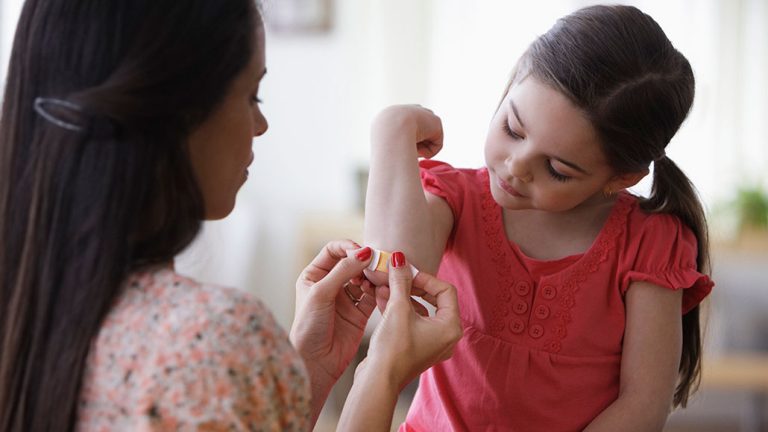amino acids: Simple molecules that occur naturally in plant and animal tissues and that are the basic building blocks of proteins.
battery: A device that can convert chemical energy into electrical energy.
bioengineer: Someone who applies engineering to solve problems in biology or in systems that will use living organisms.
cell: (in biology) The smallest structural and functional unit of an organism. Typically too small to see with the unaided eye, it consists of a watery fluid surrounded by a membrane or wall. Depending on their size, animals are made of anywhere from thousands to trillions of cells. Most organisms, such as yeasts, molds, bacteria and some algae, are composed of only one cell.
chemical: A substance formed from two or more atoms that unite (bond) in a fixed proportion and structure. For example, water is a chemical made when two hydrogen atoms bond to one oxygen atom. Its chemical formula is H2O. Chemical also can be an adjective to describe properties of materials that are the result of various reactions between different compounds.
clinical: (in medicine) A term that refers to diagnoses, treatments or experiments involving people.
compound: (often used as a synonym for chemical) A compound is a substance formed when two or more chemical elements unite (bond) in fixed proportions. For example, water is a compound made of two hydrogen atoms bonded to one oxygen atom. Its chemical symbol is H2O.
computer model: A program that runs on a computer that creates a model, or simulation, of a real-world feature, phenomenon or event.
current: A fluid — such as of water or air — that moves in a recognizable direction. (in electricity) The flow of electricity or the amount of charge moving through some material over a particular period of time.
electrode: A device that conducts electricity and is used to make contact with the non-metal part of an electrical circuit, or that contacts something through which an electrical signal moves. (in electronics) Part of a semiconductor device (such as a transistor) that either releases or collects electrons (negative charges) or holes (positive charges) — or that can control their movement.
engineer: A person who uses science and math to solve problems. As a verb, to engineer means to design a device, material or process that will solve some problem or unmet need.
gel: A gooey or viscous material that can flow like a thick liquid.
liquid crystal: A state of matter that falls somewhere between a liquid and a solid crystal. Made from an organic (carbon-based) material, its physical structure consists of loosely ordered arrays of its molecular building blocks. It can have highly fluid movement and form droplets. But it won’t rip or shear. And similar to true crystals, it can sometimes be electrical, magnetic or show optical properties.
metal: Something that conducts electricity well, tends to be shiny (reflective) and is malleable (meaning it can be reshaped with heat and not too much force or pressure).
microscope: An instrument used to view objects, like bacteria, or the single cells of plants or animals, that are too small to be visible to the unaided eye.
molecule: An electrically neutral group of atoms that represents the smallest possible amount of a chemical compound. Molecules can be made of single types of atoms or of different types. For example, the oxygen in the air is made of two oxygen atoms (O2), but water is made of two hydrogen atoms and one oxygen atom (H2O).
oleic acid: A monounsaturated fatty acid that is an ingredient of many vegetable oils and beef tallow. In the diet, it’s a relatively heart-healthy type of fat. Industrial uses for this natural product include soap-making, cosmetics, lubricants and polishing compounds.
pacemaker: A small medical device implanted in the body to help control abnormal heart rhythms. This device sends an electrical signal. It stimulates the heart to beat at a regular and healthy rate.
piezoelectric: (n. piezoelectricity) An adjective describing the ability of certain materials (such as crystals) to develop an electric voltage when deformed, or squeezed.
protein: A compound made from one or more long chains of amino acids. Proteins are an essential part of all living organisms. They form the basis of living cells, muscle and tissues; they also do the work inside of cells. Antibodies, hemoglobin and enzymes are all examples of proteins. Medicines frequently work by latching onto proteins.
solid: Firm and stable in shape; not liquid or gaseous.
tendon: A tissue in the body that connects muscle and bone.
tissue: Made of cells, it is any of the distinct types of materials that make up animals, plants or fungi. Cells within a tissue work as a unit to perform a particular function in living organisms. Different organs of the human body, for instance, often are made from many different types of tissues.
X-ray: A type of radiation analogous to gamma rays, but having somewhat lower energy.


